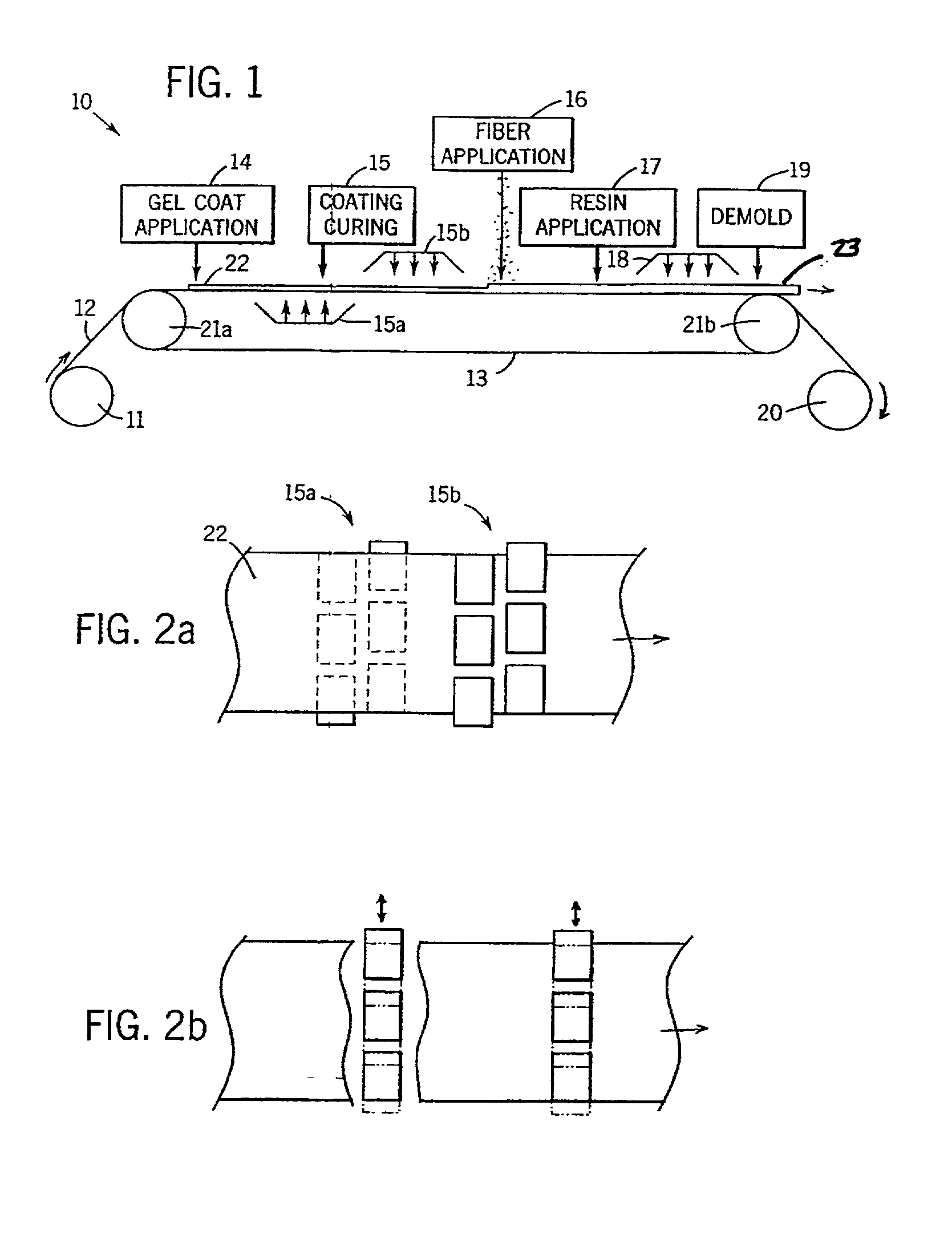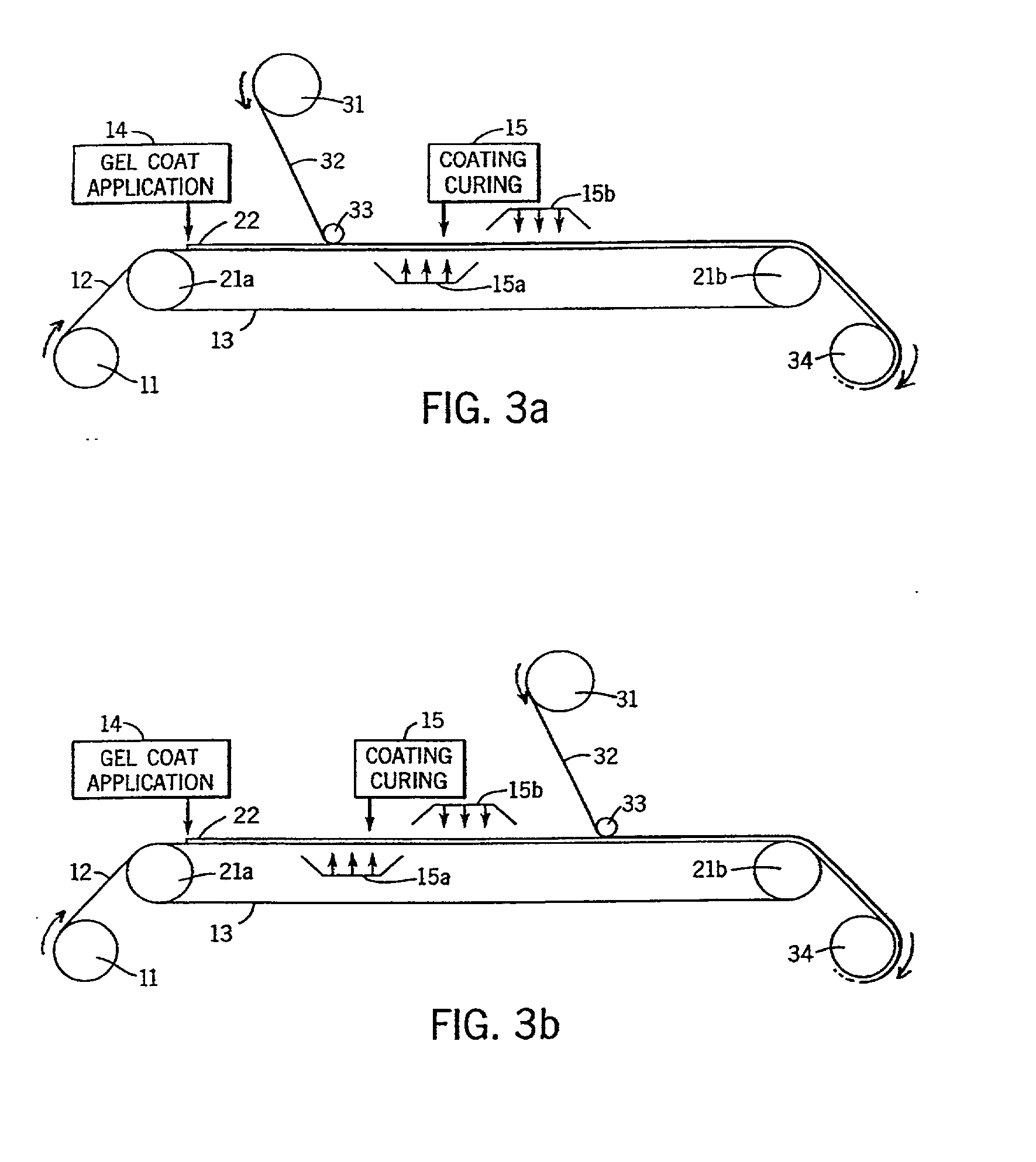Curing of a gel coat on a mold
a gel coat and mold technology, applied in the field of gel coats, can solve the problems of void defects, one or more of three wells, and the production of gel coats with exposed surfaces with low gloss
- Summary
- Abstract
- Description
- Claims
- Application Information
AI Technical Summary
Benefits of technology
Problems solved by technology
Method used
Image
Examples
example 2
Invention
[0054] Example 1 was repeated except that the gel coat was exposed from the bottom side only with a lamp distance of 3 and a line speed of 12 fpm. The gel coat had a dense, subsurface porosity with craters measuring up to 0.2 mm in diameter. Warpage was significant, i.e., 4 inches, the panel had an initial 60.degree. gloss value of 89, and it did not exhibit alligatoring.
[0055] While relatively small, this example does report an improvement over Example 1 in regards to porosity. It also reports an improvement over Example 1 in gloss. This is because the coating of this example received much more light near the mold than the coating in Example 1. This, however, resulted in increased warpage (due to the force imbalance which occured when the resin shrank during cure).
example 3
Invention
[0056] Example 1 was repeated except that the gel coat was exposed first from the bottom side (lamp distance of 3) and then from the top side (lamp distance of 5) with a line speed of 12 fpm. The gel coat had a dense, subsurface porosity with craters measuring up to 0.1 mm in diameter. Warpage was low, i.e., 1 inch, the panel had an initial 60.degree. gloss value of 90, and it did not exhibit alligatoring.
example 4
Comparative
[0057] Example 1 was repeated except that the acrylic resin was replaced with an isophthalic polyester resin, and the curing sequence was two exposures at a line speed of 15 fpm, followed by two exposures at 5 fpm, followed by two exposures at 2 fpm. The gel coat did not exhibit any porosity, but it did exhibit alligatoring. The gel coat also exhibited low warpage of 0.5, and it had a initial 60.degree. gloss value of 97.
PUM
| Property | Measurement | Unit |
|---|---|---|
| thickness | aaaaa | aaaaa |
| thickness | aaaaa | aaaaa |
| thickness | aaaaa | aaaaa |
Abstract
Description
Claims
Application Information
 Login to View More
Login to View More - R&D
- Intellectual Property
- Life Sciences
- Materials
- Tech Scout
- Unparalleled Data Quality
- Higher Quality Content
- 60% Fewer Hallucinations
Browse by: Latest US Patents, China's latest patents, Technical Efficacy Thesaurus, Application Domain, Technology Topic, Popular Technical Reports.
© 2025 PatSnap. All rights reserved.Legal|Privacy policy|Modern Slavery Act Transparency Statement|Sitemap|About US| Contact US: help@patsnap.com



